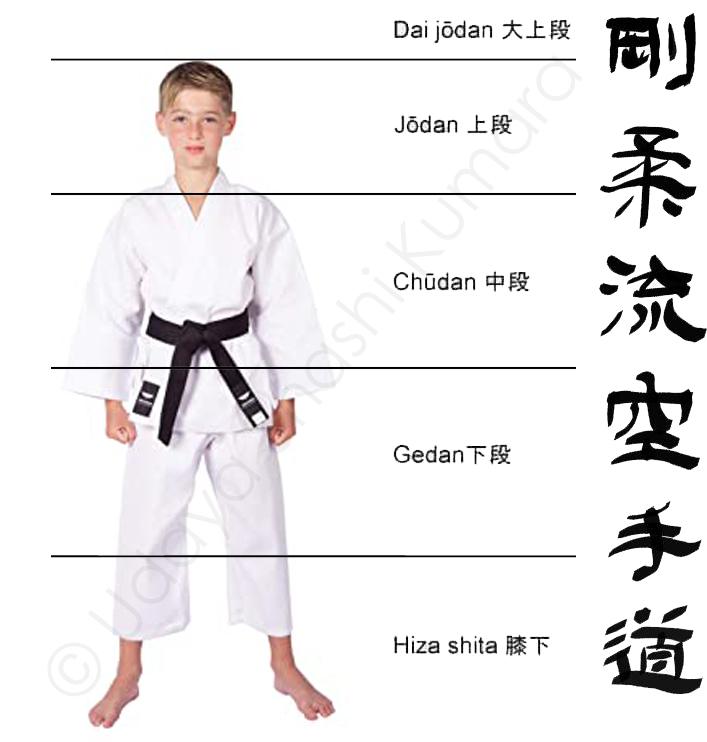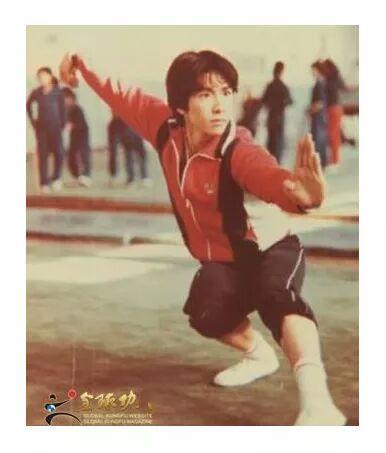Karate is a traditional Japanese martial art that originated in Okinawa, Japan. One of the most important aspects of karate is the different levels of attack and defense, which are divided into three main categories: Jodan, Chudan, and Gedan. These three levels refer to different areas of the body, and mastering these levels is essential for any karate practitioner who wants to become proficient in the art.
Jodan:
Jodan refers to the area of the body above the chest, including the face, head, and neck. Jodan techniques are high-level attacks that are used to strike the upper body and head of an opponent. Some examples of Jodan techniques include:
Jodan Uke (Upper Block) - This is a technique used to block incoming Jodan attacks. It is performed by raising the arm above the head to block the incoming attack.
Jodan Tsuki (Upper Punch) - This is a powerful punch aimed at the opponent's face or head. It is a high-level attack that requires speed and accuracy.
Jodan Keri (Upper Kick) - This is a high-level kick that is aimed at the opponent's head or face. It requires a lot of flexibility and balance to execute effectively.
Chudan:
Chudan refers to the area of the body between the chest and the waist, including the stomach and ribs. Chudan techniques are mid-level attacks that are used to strike the opponent's midsection. Some examples of Chudan techniques include:
Chudan Uke (Middle Block) - This is a technique used to block incoming Chudan attacks. It is performed by bringing the arm across the body to block the incoming attack.
Chudan Tsuki (Middle Punch) - This is a punch aimed at the opponent's stomach or ribs. It is a mid-level attack that requires speed and accuracy.
Chudan Keri (Middle Kick) - This is a kick aimed at the opponent's midsection. It requires balance and power to execute effectively.
Gedan:
Gedan refers to the area of the body below the waist, including the groin and legs. Gedan techniques are low-level attacks that are used to strike the opponent's lower body. Some examples of Gedan techniques include:
Gedan Barai (Low Block) - This is a technique used to block incoming Gedan attacks. It is performed by sweeping the arm across the body to block the incoming attack.
Gedan Tsuki (Low Punch) - This is a punch aimed at the opponent's legs or groin. It is a low-level attack that requires speed and accuracy.
Gedan Keri (Low Kick) - This is a kick aimed at the opponent's legs or groin. It requires balance and power to execute effectively.
In conclusion, mastering the different levels of attack and defense in karate is essential for anyone who wants to become a proficient karate practitioner. By understanding the techniques and principles behind Jodan, Chudan, and Gedan, you can develop a well-rounded skill set that will help you to defend yourself effectively in any situation. Remember, karate is not just about physical strength but also mental strength, discipline, and focus.
Jodan:
Jodan refers to the area of the body above the chest, including the face, head, and neck. Jodan techniques are high-level attacks that are used to strike the upper body and head of an opponent. Some examples of Jodan techniques include:
Jodan Uke (Upper Block) - This is a technique used to block incoming Jodan attacks. It is performed by raising the arm above the head to block the incoming attack.
Jodan Tsuki (Upper Punch) - This is a powerful punch aimed at the opponent's face or head. It is a high-level attack that requires speed and accuracy.
Jodan Keri (Upper Kick) - This is a high-level kick that is aimed at the opponent's head or face. It requires a lot of flexibility and balance to execute effectively.
Chudan:
Chudan refers to the area of the body between the chest and the waist, including the stomach and ribs. Chudan techniques are mid-level attacks that are used to strike the opponent's midsection. Some examples of Chudan techniques include:
Chudan Uke (Middle Block) - This is a technique used to block incoming Chudan attacks. It is performed by bringing the arm across the body to block the incoming attack.
Chudan Tsuki (Middle Punch) - This is a punch aimed at the opponent's stomach or ribs. It is a mid-level attack that requires speed and accuracy.
Chudan Keri (Middle Kick) - This is a kick aimed at the opponent's midsection. It requires balance and power to execute effectively.
Gedan:
Gedan refers to the area of the body below the waist, including the groin and legs. Gedan techniques are low-level attacks that are used to strike the opponent's lower body. Some examples of Gedan techniques include:
Gedan Barai (Low Block) - This is a technique used to block incoming Gedan attacks. It is performed by sweeping the arm across the body to block the incoming attack.
Gedan Tsuki (Low Punch) - This is a punch aimed at the opponent's legs or groin. It is a low-level attack that requires speed and accuracy.
Gedan Keri (Low Kick) - This is a kick aimed at the opponent's legs or groin. It requires balance and power to execute effectively.
In conclusion, mastering the different levels of attack and defense in karate is essential for anyone who wants to become a proficient karate practitioner. By understanding the techniques and principles behind Jodan, Chudan, and Gedan, you can develop a well-rounded skill set that will help you to defend yourself effectively in any situation. Remember, karate is not just about physical strength but also mental strength, discipline, and focus.
Karate is a traditional Japanese martial art that originated in Okinawa, Japan. One of the most important aspects of karate is the different levels of attack and defense, which are divided into three main categories: Jodan, Chudan, and Gedan. These three levels refer to different areas of the body, and mastering these levels is essential for any karate practitioner who wants to become proficient in the art.
Jodan:
Jodan refers to the area of the body above the chest, including the face, head, and neck. Jodan techniques are high-level attacks that are used to strike the upper body and head of an opponent. Some examples of Jodan techniques include:
Jodan Uke (Upper Block) - This is a technique used to block incoming Jodan attacks. It is performed by raising the arm above the head to block the incoming attack.
Jodan Tsuki (Upper Punch) - This is a powerful punch aimed at the opponent's face or head. It is a high-level attack that requires speed and accuracy.
Jodan Keri (Upper Kick) - This is a high-level kick that is aimed at the opponent's head or face. It requires a lot of flexibility and balance to execute effectively.
Chudan:
Chudan refers to the area of the body between the chest and the waist, including the stomach and ribs. Chudan techniques are mid-level attacks that are used to strike the opponent's midsection. Some examples of Chudan techniques include:
Chudan Uke (Middle Block) - This is a technique used to block incoming Chudan attacks. It is performed by bringing the arm across the body to block the incoming attack.
Chudan Tsuki (Middle Punch) - This is a punch aimed at the opponent's stomach or ribs. It is a mid-level attack that requires speed and accuracy.
Chudan Keri (Middle Kick) - This is a kick aimed at the opponent's midsection. It requires balance and power to execute effectively.
Gedan:
Gedan refers to the area of the body below the waist, including the groin and legs. Gedan techniques are low-level attacks that are used to strike the opponent's lower body. Some examples of Gedan techniques include:
Gedan Barai (Low Block) - This is a technique used to block incoming Gedan attacks. It is performed by sweeping the arm across the body to block the incoming attack.
Gedan Tsuki (Low Punch) - This is a punch aimed at the opponent's legs or groin. It is a low-level attack that requires speed and accuracy.
Gedan Keri (Low Kick) - This is a kick aimed at the opponent's legs or groin. It requires balance and power to execute effectively.
In conclusion, mastering the different levels of attack and defense in karate is essential for anyone who wants to become a proficient karate practitioner. By understanding the techniques and principles behind Jodan, Chudan, and Gedan, you can develop a well-rounded skill set that will help you to defend yourself effectively in any situation. Remember, karate is not just about physical strength but also mental strength, discipline, and focus.










